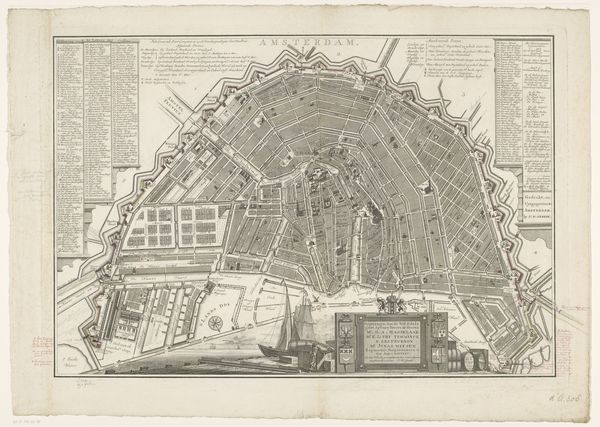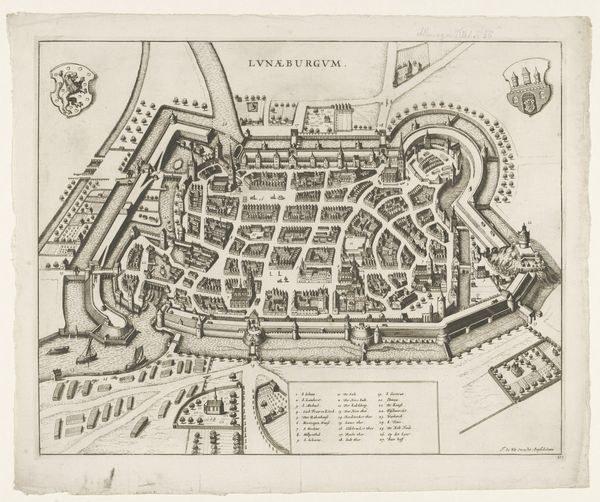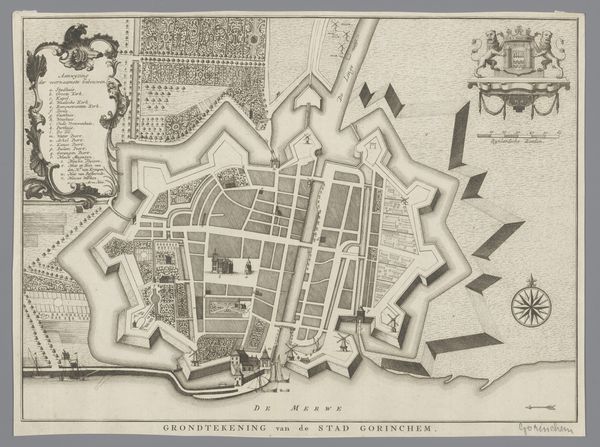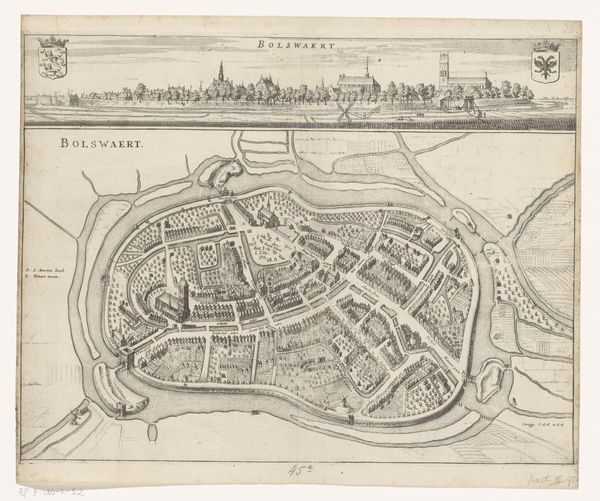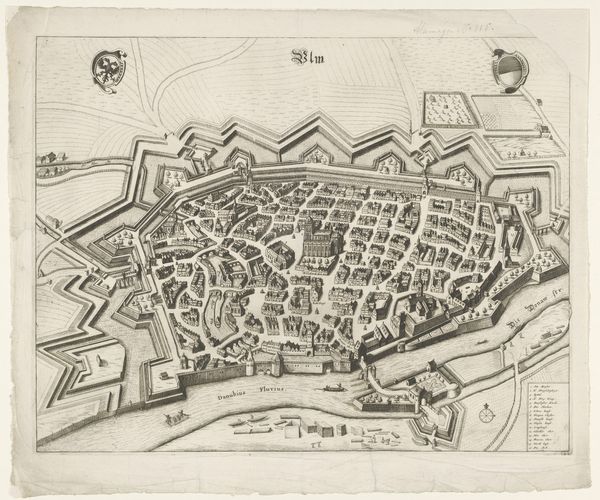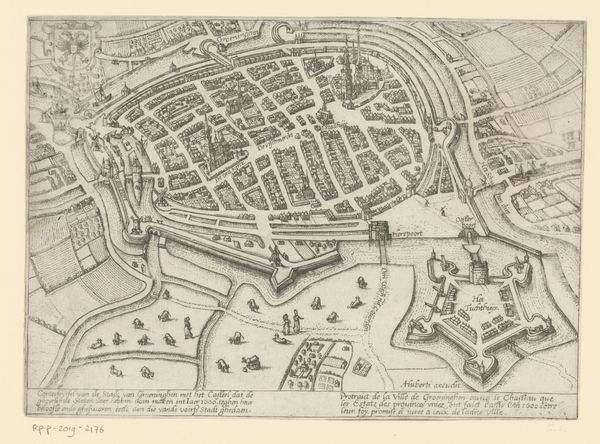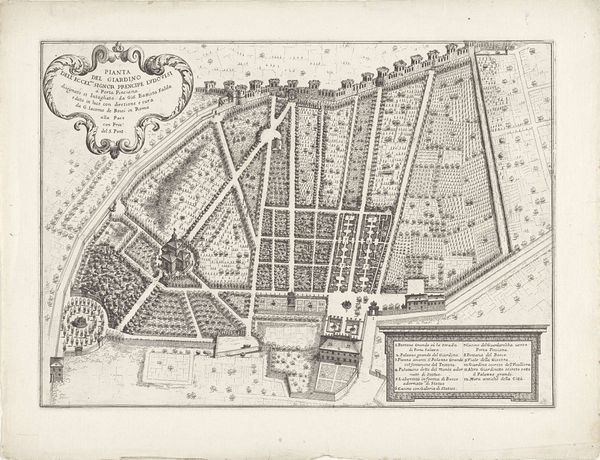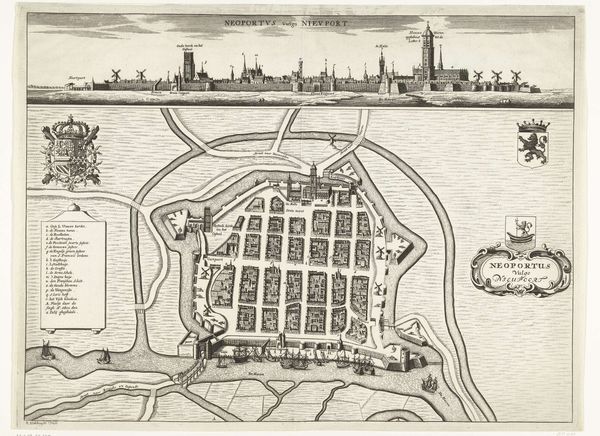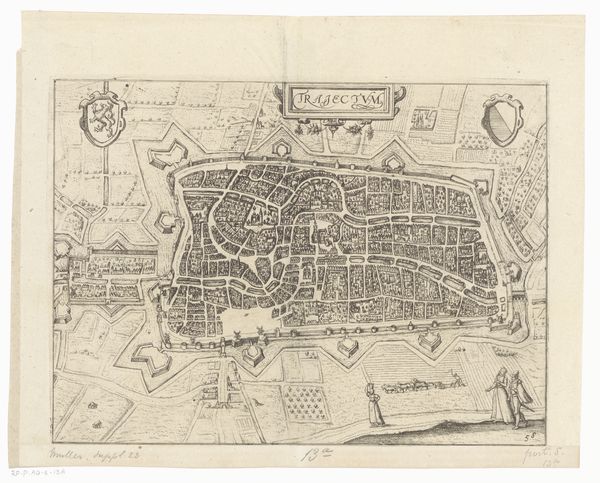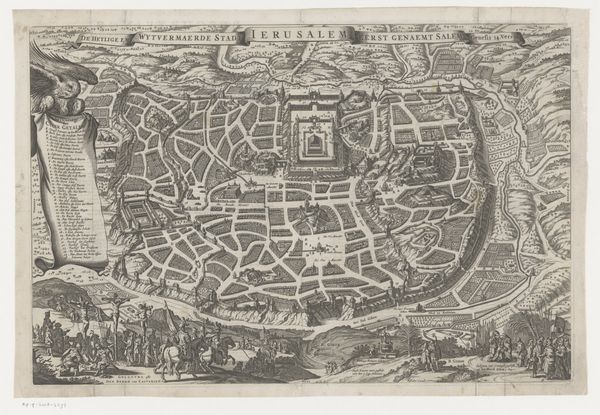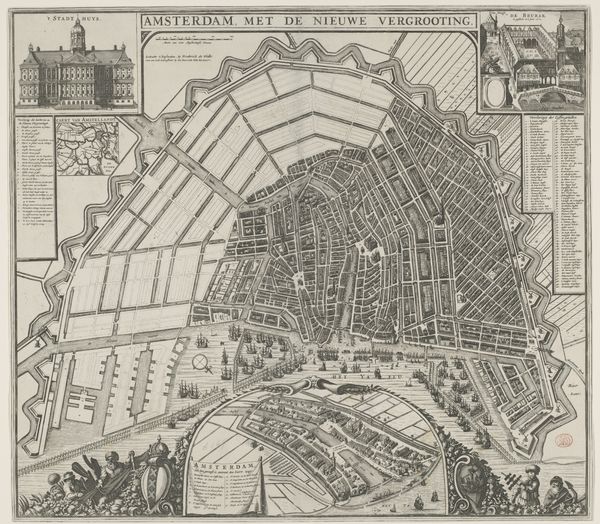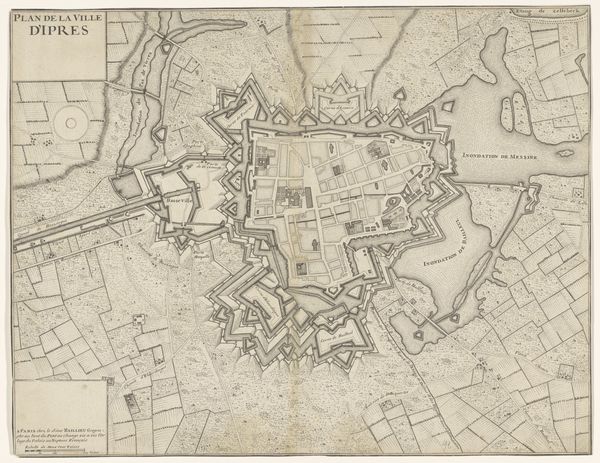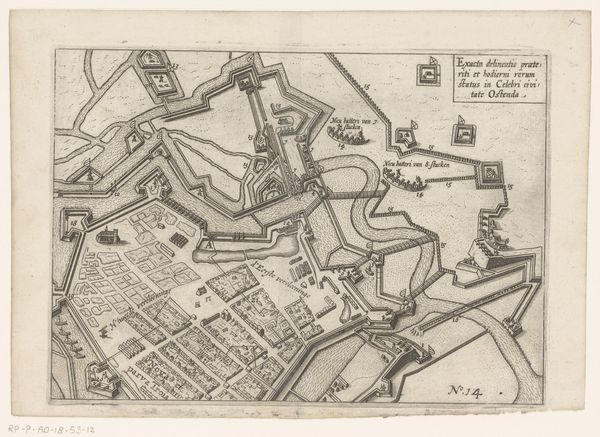
print, engraving, architecture
# print
#
pen illustration
#
old engraving style
#
landscape
#
geometric
#
cityscape
#
history-painting
#
engraving
#
architecture
Dimensions: height 393 mm, width 488 mm
Copyright: Rijks Museum: Open Domain
Curator: Isaac Basire's "Plattegrond van Nieuwpoort," created between 1751 and 1762, offers us an exquisitely detailed engraving of a cityscape. Editor: My first impression is the sheer precision of the linework. It's not just a map; it feels like a portrait of order and control. A spiderweb of intent, almost… Curator: Indeed. The geometric patterns, particularly the star-shaped fortress surrounding the city, are visually arresting. Note how Basire employs line and hatching to create tonal variations, differentiating between the built environment and the waterways. The image is bifurcated, employing both plan and elevation views. What are we to make of that decision, aesthetically? Editor: The fortifications shout power and resilience. These star forts aren't merely defensive structures, but emblems of stability, echoing a period grappling with shifting empires and treaty-defined borders, the Treaty of Utrecht that the inscription alludes to. Do you see any symbolic clues about civic pride? Curator: Well, notice how the detailed cityscape at the top mirrors the overall precision seen in the architectural rendering. We have a visual language here using verticality with its soaring spires as a potent symbol that is designed to evoke a specific emotional reaction through visual form, and not by pure decoration. It isn't organic at all, no. Editor: Agreed. The windmills too aren’t just functional elements but culturally-weighted markers—symbols of ingenuity but also of a localized connection to the land. Together, the geometry of power, of fortifications and symbols of culture blend into one visual claim about cultural dominance in landscape. Curator: The strategic placement of the ships at the harbor hints at Nieuwpoort’s economic vitality and naval prowess, even if it's presented somewhat statically. There is visual unity here at the level of pattern. What seems interesting is that, given the strategic importance of such port city at the time, Basire created no narrative scenes. Only visual description. Editor: I see the utility here and the focus on a certain set of symbolic tropes— the strength of walls, of industry. Ultimately, for me, it emphasizes the idea of human-engineered triumph but perhaps also entrapment within such severe boundaries. Curator: Interesting, to look at it in a wider historical and formal lens offers a richer way of approaching art. Editor: For sure, while investigating these pieces, the convergence between structure, symbolic representation and emotional residue leaves lingering insights about our place in that continuum.
Comments
No comments
Be the first to comment and join the conversation on the ultimate creative platform.
